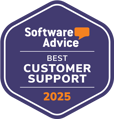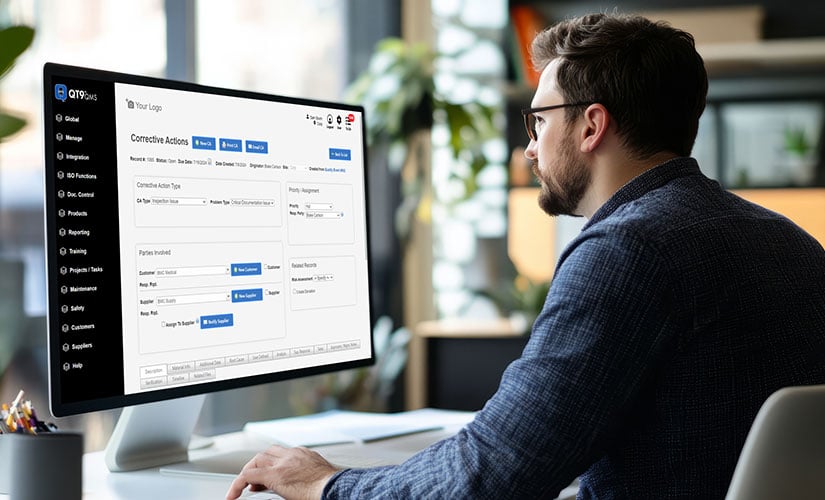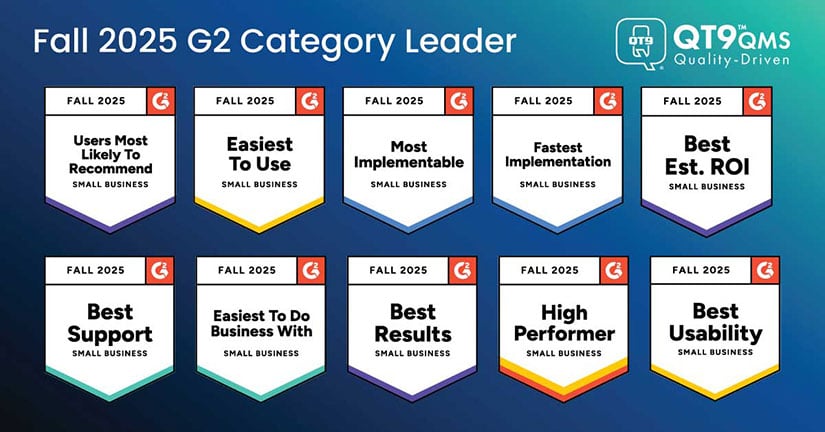Risk Management Software to Control and Mitigate Risk
Identify, assess and mitigate business and quality risks with real-time visibility, automated scoring and integrated CAPA tracking—all in one QMS.
Predict & Mitigate Risk
Identify, assess and reduce risks before they affect operations.
Central Risk Repository
Manage all risks in one secure, searchable system, with no spreadsheets.
Auto Risk Scoring
Automatically generate risk scores based on likelihood and impact.
Real‑Time Visibility
Monitor risk trends and status using real-time data.
CAPA & Audit Sync
Connect risks with CAPAs and audits to easily close the loop.
Meet Compliance Fast
Document risk processes to align with ISO, FDA and GMP rules.
What is risk management software?
Risk management is the process organizations use to identify, assess, prioritize and mitigate potential threats that could impact business operations, product quality or regulatory compliance. It is a key requirement in quality standards like ISO 9001 and FDA regulations, helping companies reduce uncertainty and ensure continuous improvement through proactive planning and control.
QT9’s risk management software makes it easy to document and manage risk across the entire organization. From logging potential hazards and calculating risk scores to tracking mitigation actions and visualizing risk with heatmaps, QT9 helps companies stay compliant and always audit ready.
All-in-one solution for streamlined risk management
Free up time with risk assessment tools built in to QT9 QMS.
Automated Assessments
Automated risk assessments for corrective and preventive actions.
Real-Time Tracking
Link to audits, deviations, NCRs and change requests.
Risk Matrices
Customize risk matrices and scoring criteria to suit your business' needs.
Assign Tasks
Create unlimited tasks for mitigation or control, assign due dates and monitor progress.
Manage Approvals
Assign approver/s and approve, reject or verify risk assessments.
User-Defined Fields
Create unlimited custom fields for tracking company-specific information.
Email Alerts
Send and receive email alerts and reminders based on your settings.
Overdue Alerts
Get email alerts when risk assessment actions are overdue.
Attach Related Files
Attach unlimited files to any risk assessment.
Risk Scoring
Create Connections
Integrated Processes
Celebrated by Experts. Loved by Customers.
QT9 QMS is a leader in Risk Management Software on Capterra, Software Advice and GetApp.

Get end-to-end quality management
FAQ: Risk Management
Risk management is the process of identifying, analyzing, mitigating or resolving risks that could affect the quality and safety of goods and services. By implementing robust risk management processes, quality control professionals can systematically identify, assess and mitigate potential risks throughout the product lifecycle.
More than ever, quality oversight calls for incorporating risk planning and mitigation into quality management systems from day one. This proactive approach enables manufacturers to anticipate and address issues before they escalate, thereby safeguarding product quality, enhancing regulatory compliance and protecting brand reputation. Integrating risk management into quality control practices enhances product quality and also fosters a culture of continuous improvement and innovation.
There is a strong emphasis on risk management in quality standards that is accepted globally. The most common of these are ISO 9001 and ISO 13485, maintained by the International Organization for Standardization (ISO), and the U.S. Food and Drug Administration’s (FDA) 21 CFR Part 820. These standards call for incorporating risk-based thinking at all points in a product’s lifecycle. More structured risk-management processes for medical devices are outlined in ISO 14971.
In general, risk management procedures involve:
- Identifying potential risks
- Conducting risk analysis
- Planning a response
- Implementing response
- Evaluating effectiveness
QT9 QMS provides an integrated platform where you can create risk assessments from other QT9 modules, including FMEA, corrective actions, nonconforming products, engineering change requests and customer feedback records.
QT9 QMS has 25-plus modules that come standard. Its cloud-based platform enables you to keep track of risk management activities and synchronize records with anyone, anywhere.
QT9 QMS is a highly rated, affordable, easy-to-use quality management system that excels at all of the processes that go into providing high-quality goods and services that are FDA and ISO compliant.
Quality management resources

Top 10 QMS Systems for 2026: A Buyers Guide

Integrated QMS, ERP & MRP for 2026 Manufacturing

QT9 Earns G2 and Capterra Fall 2025 Awards
Try QT9 for free
Ready to simplify your quality processes? No credit card needed.